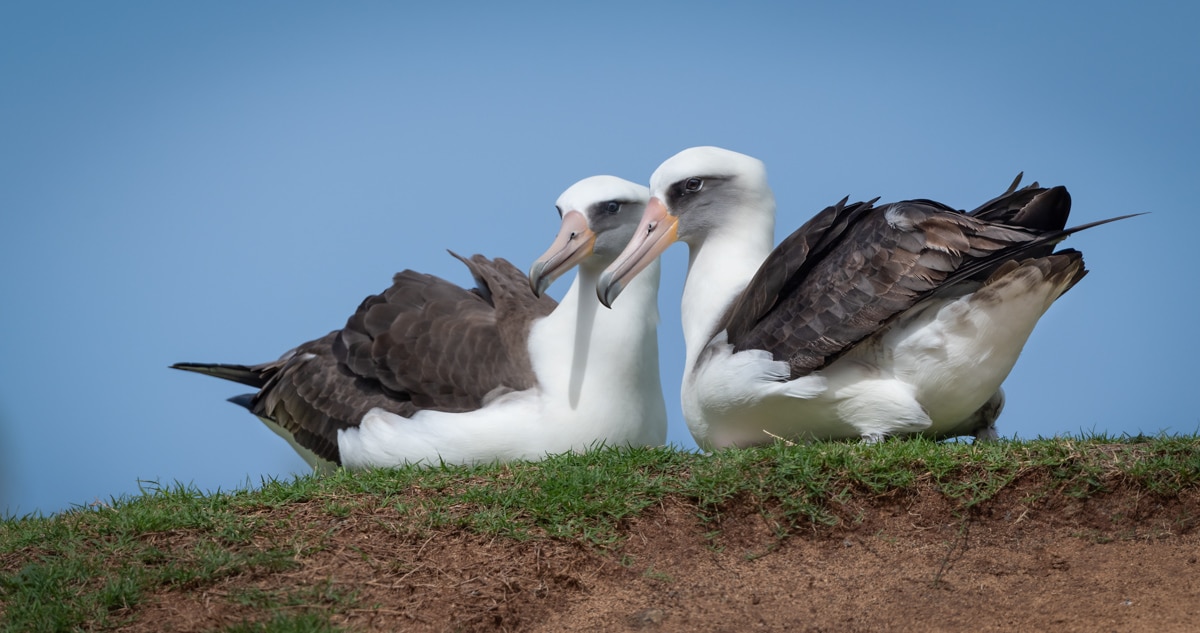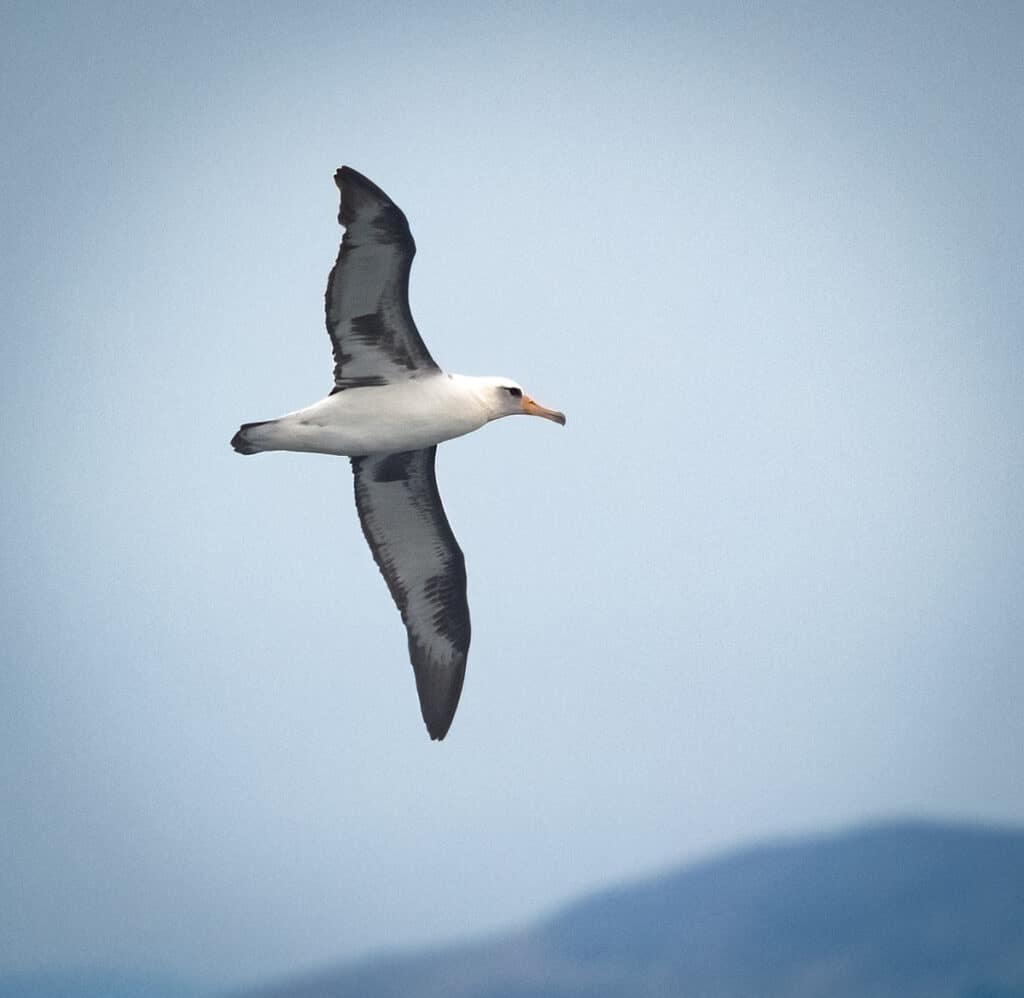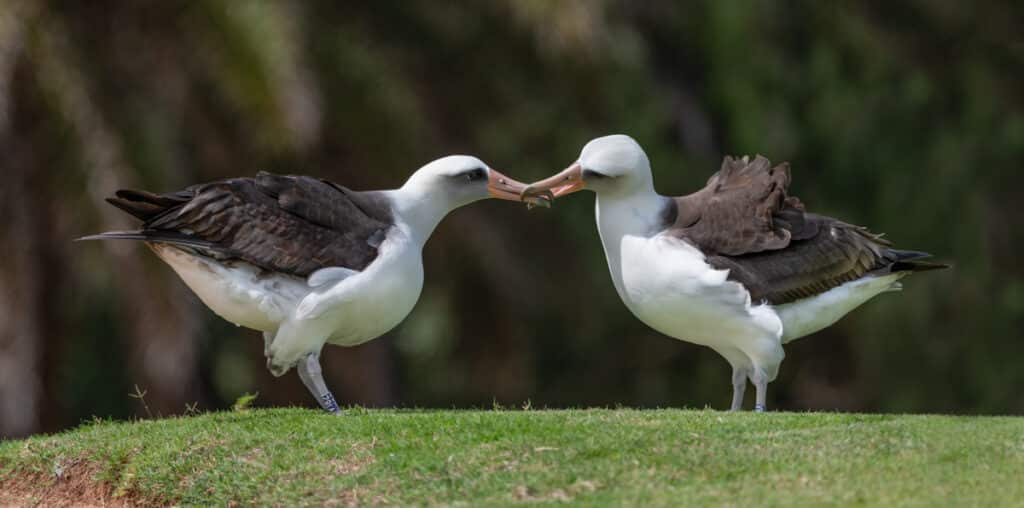
Aside from being one of the world’s most majestic seabirds, albatrosses are remarkable in so many ways: longevity, dedication to family, and having a loved one for as long as possible. In today’s blog, we look at the long and loving life of the Laysan Albatross.

Life on the Ocean Waves
When Samuel Taylor Coleridge wrote his epic poem about consequence and salvation, there was an abundance of albatrosses riding the winds across the oceans. Mariners, Ancient or no, were used to seeing these benign-faced companions on their long voyages, the bird’s calm arcing glides earning them the awe of the men all at sea. These days, very few of these birds are left due to threats like climate change, pollution, and invasive species at breeding sites. Many albatrosses die at sea, caught up in fishing lines and nets. These events place 15 of the 22 albatross species as “threatened with extinction” on the IUCN’s Red List.

Love as Old as Time
The world’s oldest known tagged bird in the wild is Wisdom, a Laysan albatross, now thought to be aged around 70. In December 2021, one of her grandchildren was sighted being cared for by her son, N333, born when Wisdom was around the age of 59 years old. Wisdom has laid more than 30 eggs during her long life but what makes this lineage remarkable is that N333 was just a chick unable to feed himself when a devastating tsunami hit their colony in March 2011. A magnitude 9.11 earthquake off the coast of Japan triggered a massive ocean swell that brought a vast surge of water and debris across the Pacific rushing onto Midway Atoll, killing 110,000 of their kind. But Wisdom, her partner of at least 12 years, Akeakamai, and her son survived: the family line continues.
Wisdom is a Laysan albatross, one of a number of species of large seabird that live the longest of all birds, often seeing out on average 60 years or so. These full life spans account for a number of habits not seen in many birds, or indeed, humans. One notable example is divorce: because these birds take around five years to reach sexual maturity, they make sure they choose a partner well, as this relationship needs to last. Globally, the human divorce rate is around 40%. In albatrosses, that figure is just above zero.

Dance of Devotion
During the crucial mating ritual, a beautiful routine takes place on the dance floor where calls, coos, and mutterings intersperse several snazzy moves, one of which is when these potential partners point their bills to the sky, make dusky eye contact, and after a good long stare when some bond is likely achieved, they moo softly like cows, a union complete. Once breeding season is over, it is thought both birds go their own ways across the vast seas, but if both are still alive, at the same time same place next year they see each other again. A shorter courtship dance is performed to re-establish that loving bond, and mating gets under way. It really is until death do us part – should one die, as Wisdom’s first bond did, after a period of mourning of around two years, another partner is sought, making these birds the world’s most committed lovers.

Save Life, Save Love
This dedication to a loving and firm family unit is made all the more important in a species that faces so much danger while living out their long lives. Scientists and poets alike understand that albatrosses, through all of the data, numbers, couplets and words, can remind us that love is real, love is constant, love is an albatross – and love needs saving.


